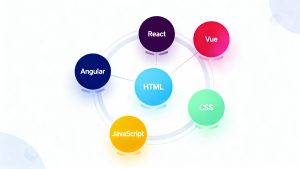In today’s globally connected digital environment, website translation tools like Google Translate have become indispensable for content accessibility. When users translate a site from a left-to-right (LTR) language such as English to a right-to-left (RTL) language like Arabic, the process is not always as straightforward as it seems. While the words change, the underlying layout often remains anchored to LTR conventions, which may not always deliver the best user experience for native RTL readers.
How Website Translation Tools Handle Layouts
Many website translation tools, including Google Translate, primarily focus on converting text nodes from one language to another. For example, when a user translates an English page to Arabic, the tool updates the HTML tag to reflect the new language:
xml<html lang="ar" class="translated-rtl">
However, this change alone does not automatically switch the layout direction to RTL. The dir="rtl" attribute or corresponding CSS rules are not consistently applied. This means that even after translation, the layout remains LTR, potentially leaving RTL readers with a less intuitive experience.
The Debate: Should Layouts Flip for RTL Languages?
Why Google Translate Might Avoid Layout Flipping
Google Translate’s reluctance to flip layouts is likely intentional. While applying RTL direction could improve readability for some users, it risks breaking complex layouts or introducing unexpected visual issues. For many developers, this cautious approach is understandable—especially when considering the vast diversity of website designs.
The Role of Modern CSS and Logical Properties
Developers who embrace modern CSS techniques, such as logical properties and flexible layouts (like Flexbox and Grid), are better equipped to handle RTL languages. Using properties such as padding-inline-start instead of padding-left allows layouts to adapt naturally when the dir="rtl" attribute is present. In such cases, the entire layout can flip, mirroring the reading direction of the target language.
User Experience: What Do RTL Readers Prefer?
User preferences regarding layout flipping are not uniform. Some native Arabic or Hebrew speakers may prefer a familiar LTR layout, particularly if they are accustomed to browsing international sites. Others, however, find a fully flipped RTL layout more intuitive and comfortable.
Anecdotal evidence from native speakers suggests that while most are used to LTR layouts, flipping certain elements—such as headers, hero text, or sidebars—can enhance readability and make the site feel more native. For example, flipping the sidebar or search bar to align with the RTL reading direction often results in a more natural user experience.
Best Practices for Handling RTL Layouts
Text Direction vs. Layout Direction
One common approach is to set the text direction to RTL while leaving the overall layout unchanged. This can be achieved by targeting specific text elements with CSS:
css.translated-rtl p,
.translated-rtl li,
.translated-rtl dt,
.translated-rtl dd,
.translated-rtl td,
.translated-rtl th,
.translated-rtl h1,
.translated-rtl h2,
.translated-rtl h3 {
direction: rtl;
}
However, this method is not foolproof and may miss certain elements, leading to inconsistencies. Thorough testing is essential to ensure a seamless experience.
Balancing User Expectations and Technical Feasibility
There is no universal “correct” answer to whether layouts should flip for RTL languages. User expectations vary, and technical constraints must be considered. For some, a fully flipped layout is preferable; for others, a hybrid approach—where only certain elements flip—is more effective.
Expert Insights and Community Perspectives
Industry professionals who work with bilingual or multilingual content often emphasize the importance of indicating the correct text direction with the dir="rtl" attribute. However, the decision to flip the entire layout depends on multiple factors, including user demographics, site design, and technical feasibility.
Some experts note that power users of RTL languages may actually prefer LTR-oriented layouts, while others advocate for a more native RTL experience. This diversity of opinion highlights the need for flexible, user-centric design strategies.
Practical Recommendations for Developers
- Use Logical Properties:
Adopt CSS logical properties to ensure layouts adapt to both LTR and RTL directions. - Test Thoroughly:
Test your site with real users to gauge their preferences and identify any layout issues. - Consider Hybrid Approaches:
Flip only certain elements (like sidebars or headers) to enhance readability without disrupting the overall design. - Stay Flexible:
Be prepared to adjust your approach based on user feedback and emerging best practices.
Conclusion: Embracing Flexibility in Multilingual Design
Ultimately, there is no one-size-fits-all solution for handling RTL layouts in web development. The best approach is to prioritize user experience, leverage modern CSS techniques, and remain adaptable to the needs of a diverse audience. By doing so, developers can create sites that are accessible, intuitive, and enjoyable for users around the world.
Read more such articles from our Newsletter here.



